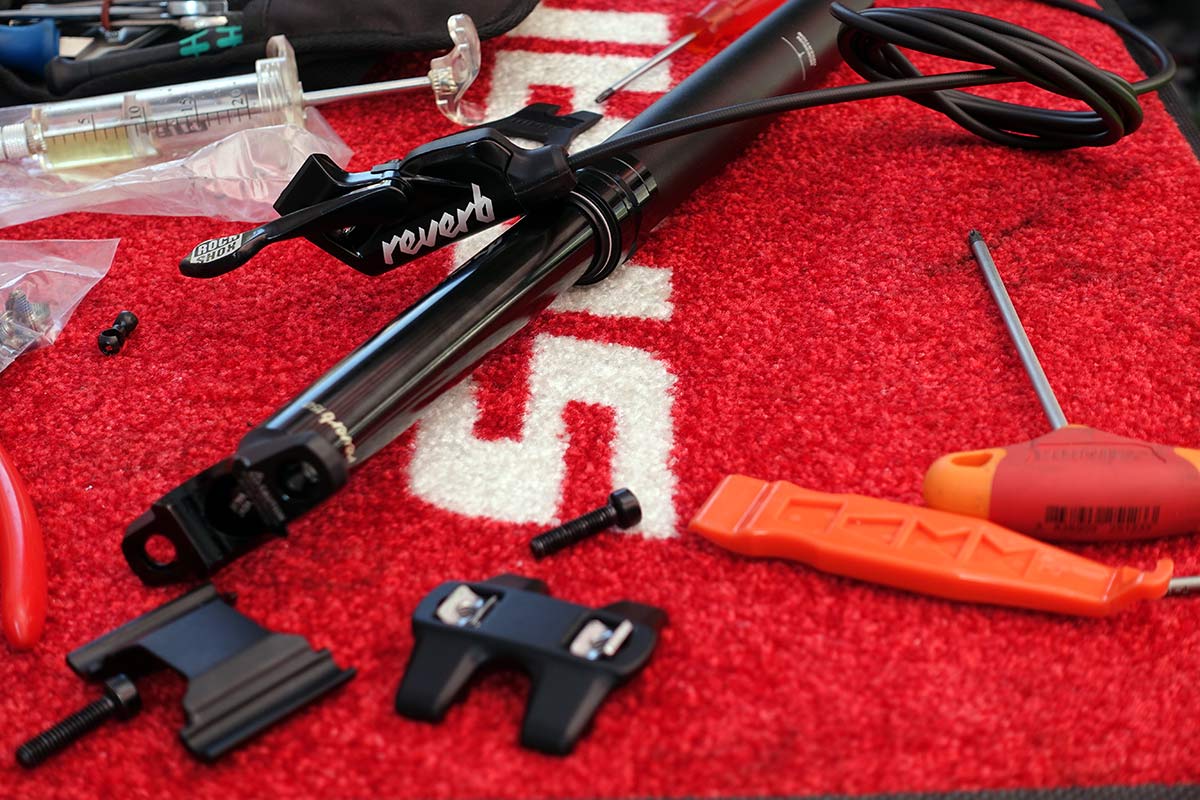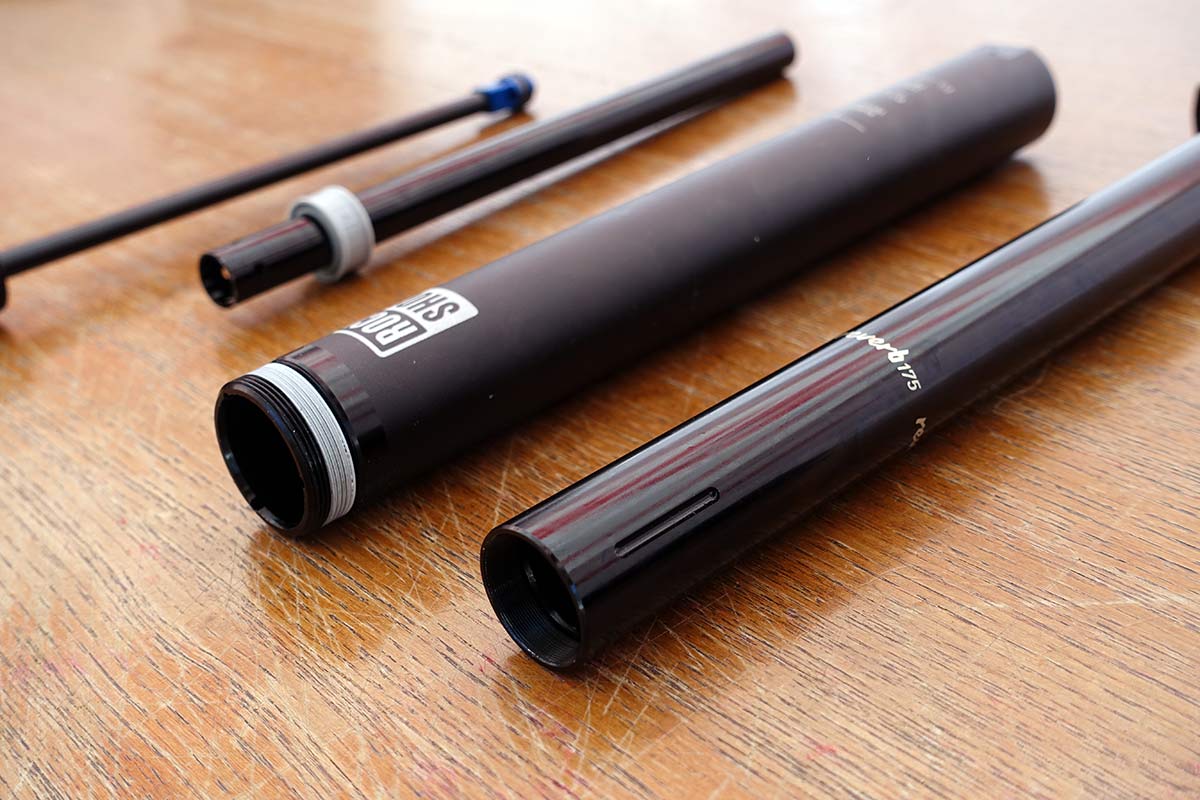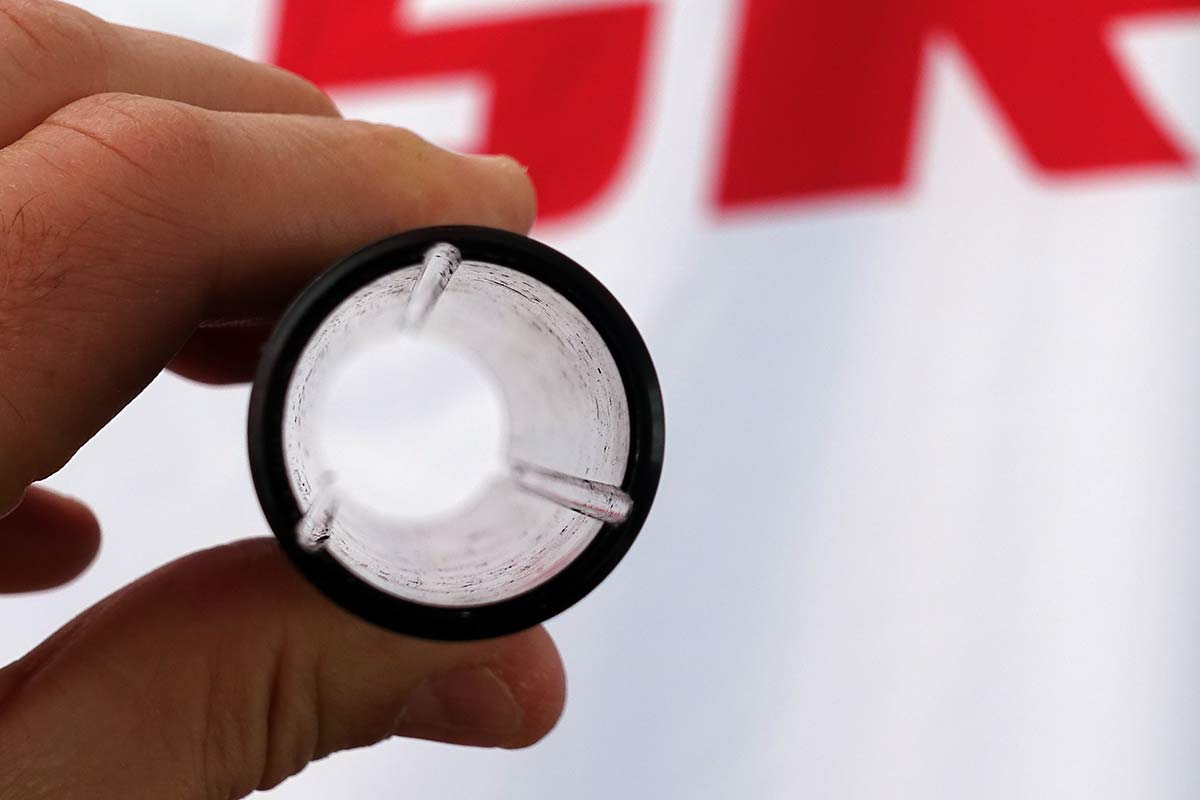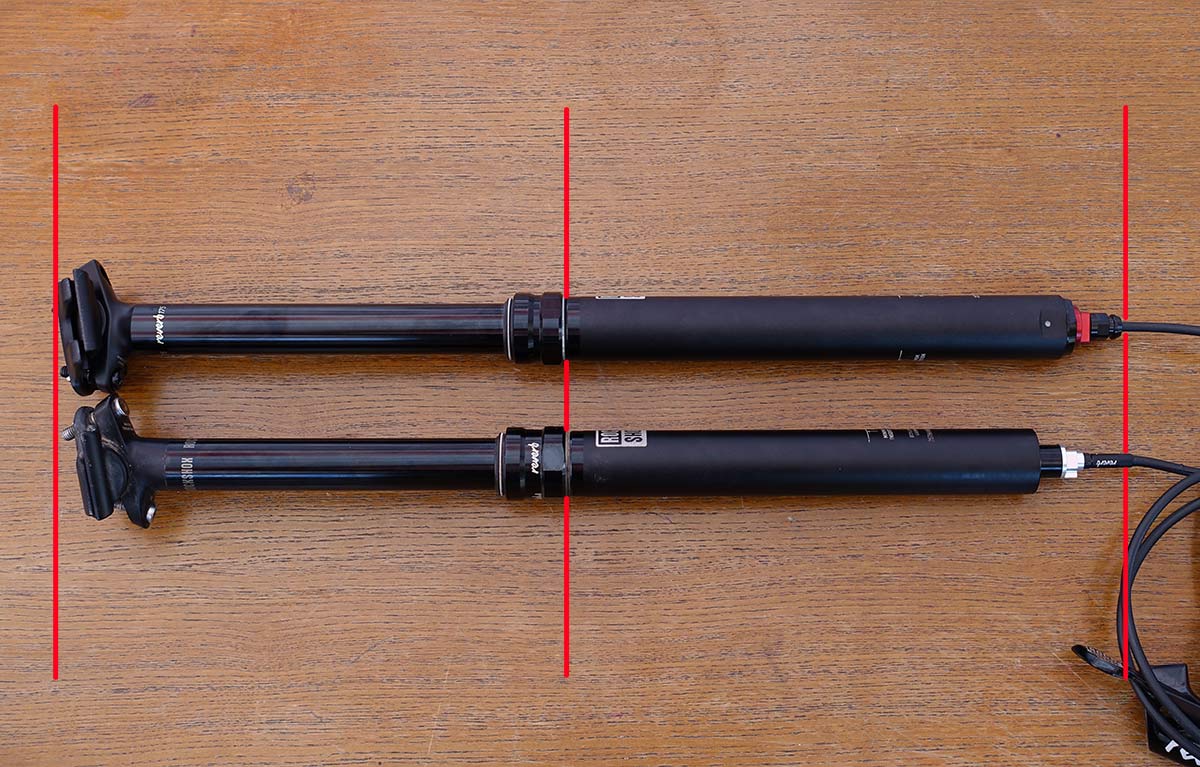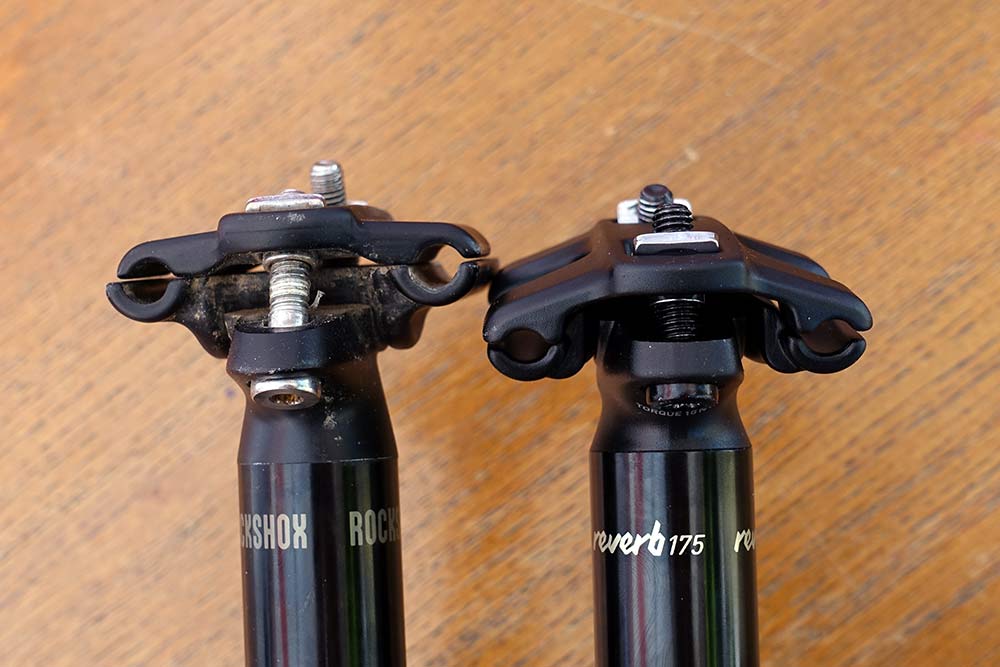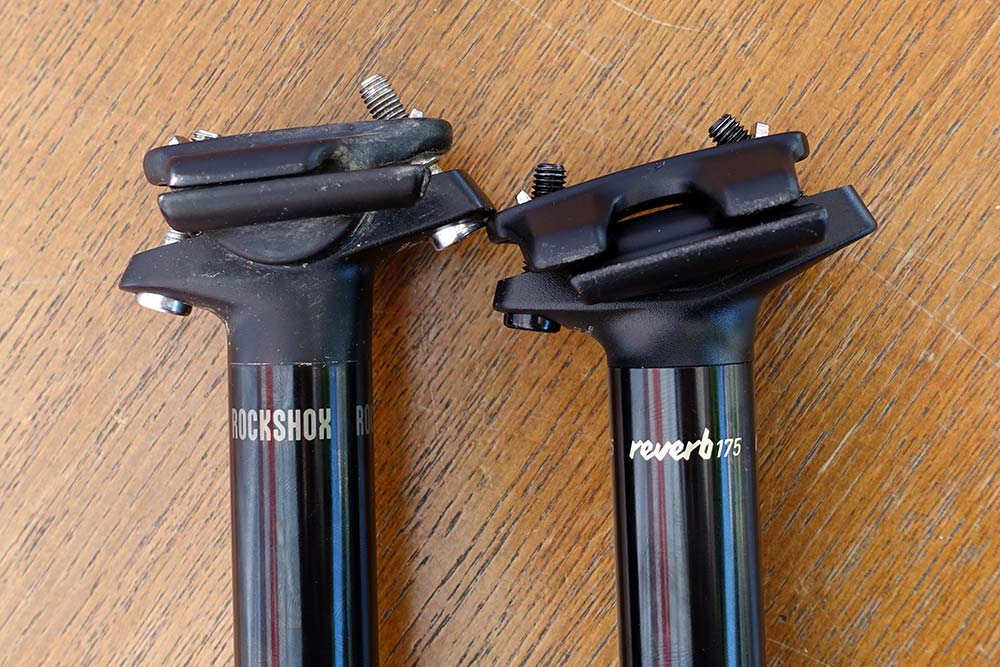The new 2020 Rockshox Reverb just landed, and it promises smoother action, better durability, easier service, and longer travel for a given length. So how did they pack all that into a new post? Does it really live up to the hype? In this video and post, we show you all the differences between the prior generation Reverb B1, and the new MY2020 Reverb, which gets the internal designation of C1. But you can just call it the “New Reverb”.
Rockshox Reverb video overview
This video shows off the internals, how it works, and provides a visual comparison between two 150mm travel posts, and how a new 175mm post compares to a prior gen 150mm version…you’ll be surprised at just how similar in total height they are, which is one of the biggest improvements to the system: Shorter riders on smaller bikes can now (probably) run longer travel dropper seat posts.
Internal improvements
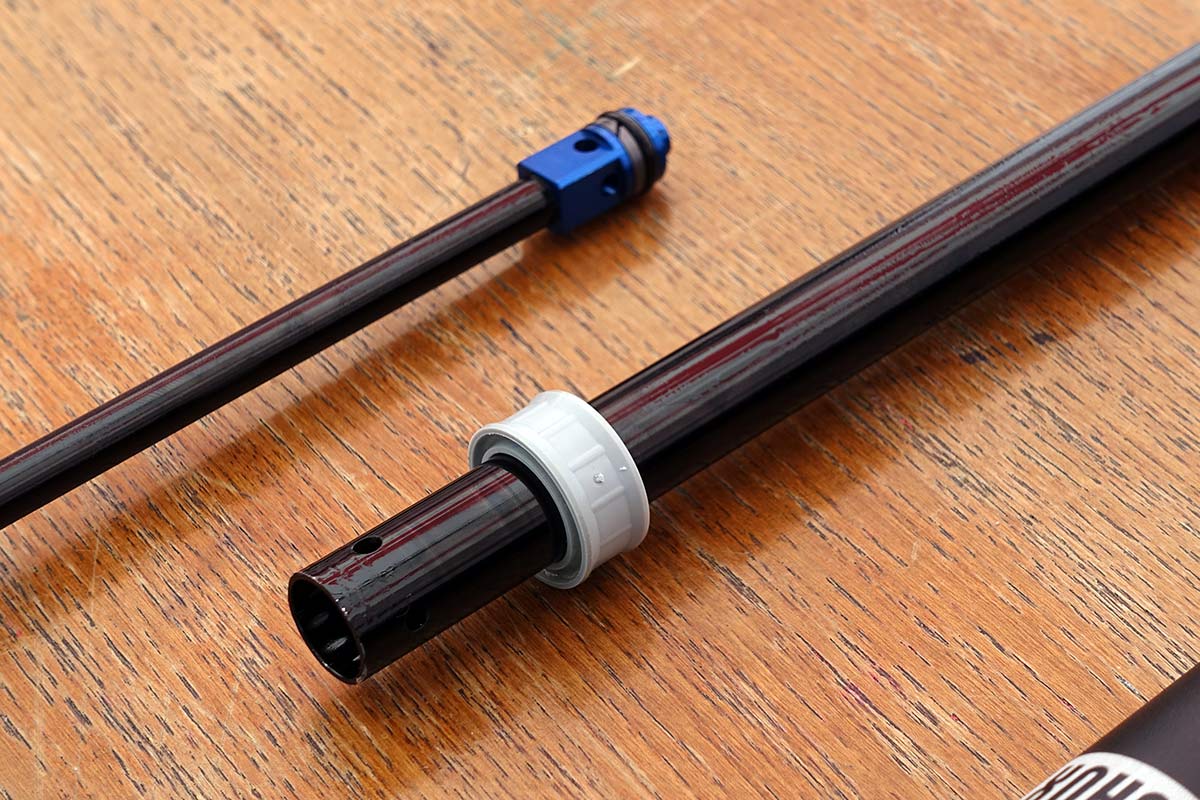 The blue bit is the master piston seal that moves oil. The gray bit is the IFP, which separates that oil from the air. Certain circumstances and normal extended use can still let a bit of air bypass it and get into the oil, but the T-handle and release valve re-separates them in just minutes.
The blue bit is the master piston seal that moves oil. The gray bit is the IFP, which separates that oil from the air. Certain circumstances and normal extended use can still let a bit of air bypass it and get into the oil, but the T-handle and release valve re-separates them in just minutes.Drop effort reduction is one of their big claims. To accomplish that, they reduced the main piston diameter. The effect is a decrease in pressure and force required to move it, partly thanks to less surface tension that would come form using more oil. The oil itself is new, from Maxima, and seals and materials are updated to reduce friction, too. All of which is very similar to the internals for the new Reverb AXS (check that post for a deeper dive on the air release valve service feature).
Not new, but still interesting if you’ve never seen it, is how they prevent the saddle from twisting. The stanchion has three short indexes, and the main tube has three full-length slots. A plastic brass “key” sits in each slot and keeps the stanchion sliding straight up and down instead of twisting. Those do eventually wear, which is why you develop more saddle twist over time.
How the Reverb got longer, yet shorter
The new Reverb pulls off a handy stunt by offering more travel while barely increasing the total length and, more importantly, maintaining a nearly identical insertion depth.
In the photo above, the new Reverb is on top in 175mm travel, and the older 150mm travel version is under it. Compare the total heights from tip to tip of the fixed, hard points, and there’s only about a half centimeter difference. Yet, you gain 2.5cm in travel. Here’s how they did it…
 Prior generation Reverb on the left, new MY2020 Reverb on the right.
Prior generation Reverb on the left, new MY2020 Reverb on the right.First, they reduced the collar height, which bought them a few millimeters. Then, they reduced the stack height of the hose connection on the bottom. This gave them about 15mm. While the photos above make it look like the new one is longer, keep in mind that the new one on the left is a 175mm dropper being compared to a 150m dropper. So, for the same insertion, you can get 25mm more travel.
The final trick was to design new saddle rail cradles that drooped downward and decreased effective saddle height by about another 7mm. Add it all up and you end up with a post that’s only a few millimeters higher, but offers 25mm more travel.
How to tell the difference between Reverbs
Visually, it’s super easy to identify the new Reverb. Just look for the travel to be etched into the top of the stanchion. That, and the tilt markings are gone from the side of the seatpost cradle, probably because you wouldn’t be able to see them anyway with the new dropped cradle design.
Other tell-tale signs are the shorter collar at the top of the main tube, though without an older one next to it, you may not know that’s new. And of course, if you see anything that says 175mm travel, then it’s definitely new as that’s a new travel measurement for the Reverb, up from the prior 170mm option. And there’s a 200mm travel version above that. For all the options, pricing and other specs, check out our original launch coverage here.
New Rockshox Reverb actual weights
While SRAM offers the Reverb in five lengths (100, 125, 150, 175, 200 mm), we only had access (or is it AXS?) to the 150mm and 200mm to weigh. At top is the 150mm travel Reverb, which weighs in at 654g. The 200mm travel Reverb on the bottom came in at 731g. Both weights are will full length remote hose and the 1x thumb lever remote attached. Claimed weights, when published, may be lower since they don’t always include the remote. If you were to extrapolate and guess, that’s a 77g difference. Split that, and the 175mm travel Reverb should come in around 693g, and subtract about 39g per size to get 615g for 125mm and 577g for 100mm travel versions. These other numbers are only estimates. Check the original post on the new Reverb for more tech specs and info.
